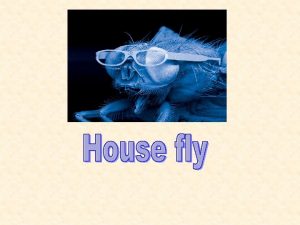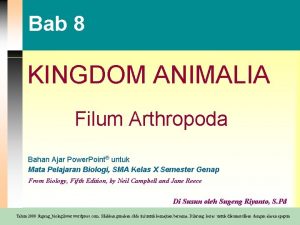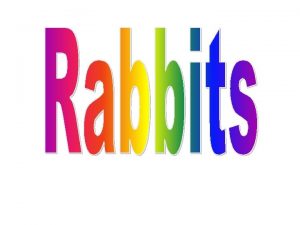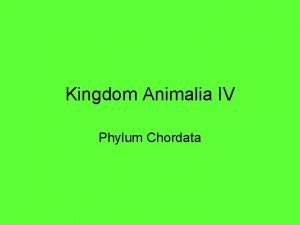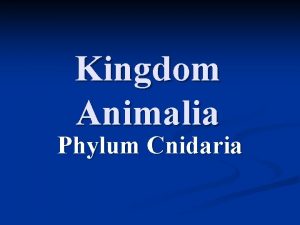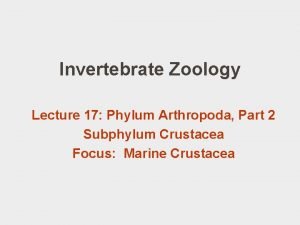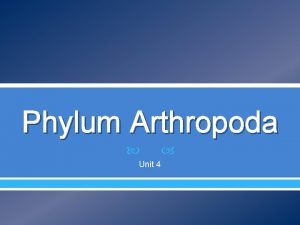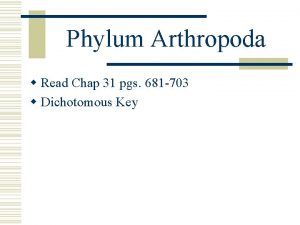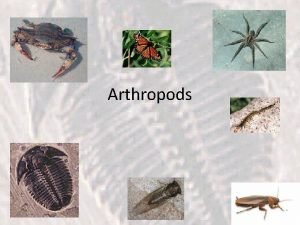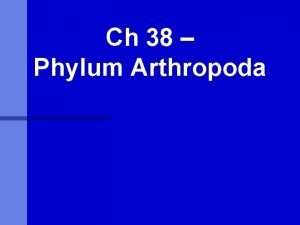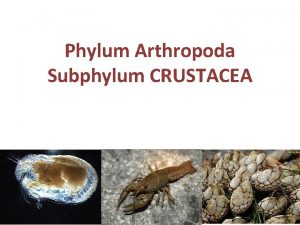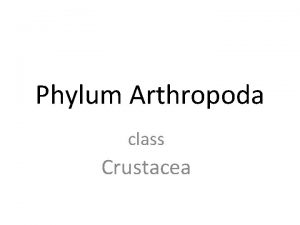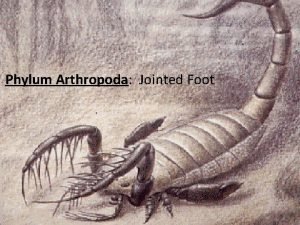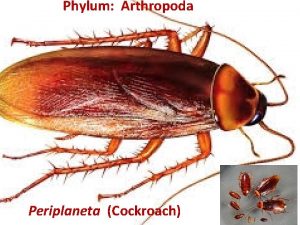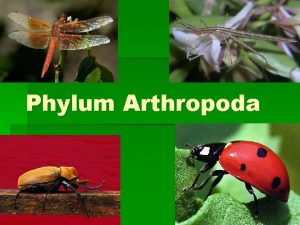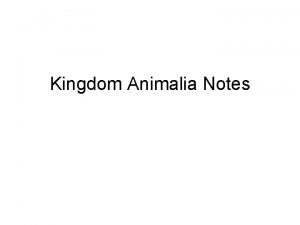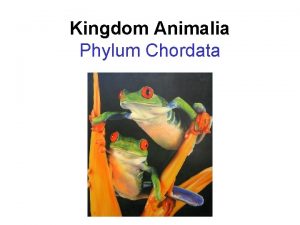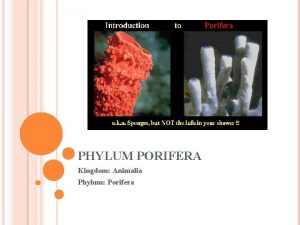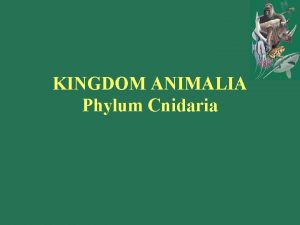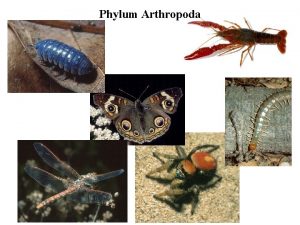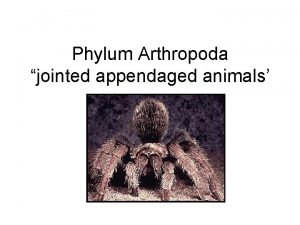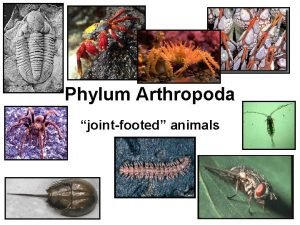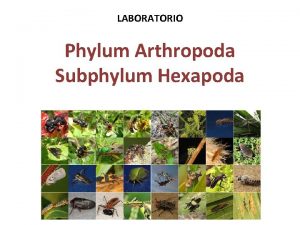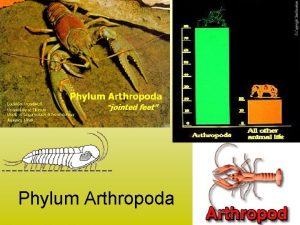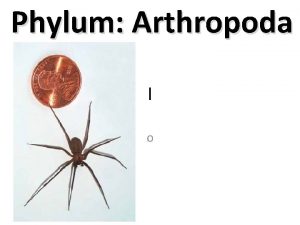Insects Grasshoppers Grasshoppers Kingdom Animalia n Phylum Arthropoda

























- Slides: 25

Insects Grasshoppers


Grasshoppers Kingdom – Animalia n Phylum – Arthropoda n Class – Insecta largest class on earth live everywhere on earth but the oceans n

Support and movement n n n Skeletal system – exoskeleton- one that is on the outside of the animal and it is divided into three parts (head, thorax, and abdomen) They must molt in order to grow the skeleton doesn’t grow Take on air to pop the skeleton to help to break free from it When they molt they have a soft skeleton at first then the hardeners take over after several hours the skeleton is hard Heavy and hard to get into small places Protects it from the harsh environment

Muscle system n n n Movement (muscle system) – six legs (all insects have six legs) two pair of wings three pair of legs jump and fly muscles work these organs and allow it to be motile

Food intake n n n Digestive system – They have a mouth with specialized parts for chewing and breaking up food. They can also suck liquid with their mouth Maxillae – upper lip – hold food salivary glands Mandible – lower lip – chew food taste Thorax – esophagus- crop – gizzard – midgut (stomach) – intestine – anus Eat grass and other plant materials Will eat small insects

Food removal n n Excretory system – remove uric acid and liquid wastes by way of the malipighian tubes in the abdomen solid waste leaves by way of the anus


Breathing intake of oxygen n Respiratory system - spiracles open and let Oxygen in the closed tracheal tubes located in the chest or thorax of the body. These open and close as the grasshopper walks and jumps. cells that need oxygen then ask or request the oxygen and then the tubes funnel it to the ones that need it through out the body. Partial closed system, not completely though

Blood Flow and movement of materials Circulatory system – open system, blood pools to the needed areas and then is lost after that and absorbed by the body as wastes. n Aortic saddle (heart like organ)- enlarged area on the dorsal vessel that helps to pump blood to areas of the body n Oxygen is taken in by the tracheal tubes then passed to the vessels and pooled where needed n

Responding to the environment n n n Nervous system – there are three nerve masses (ganglions) that work together to get information through-out the body. taste Antennae (1 pair) yes smell / feel Antennae (1 pair) yes see Compound eye (2) yes head has a cerebral ganglion (called the brain) that senses vibrations nerve cord to pull all the ganglions and nerves together

New offspring n n Reproductive system - They are sexual reproducers. They have sexes male or females have an ovipositor to release eggs into the ground once they are fertilized males insert the end of their tail into the female ovipositor and release sperm to fertilize the eggs. Under ground the grasshopper eggs hatch and go through incomplete metamorphosis. (nymphs – young adults)

Reproduction (cont. ) Nymphs emerge from the ground and go through several molting before becoming an adult. n Sounds attract other grasshoppers to one another. These sounds are made by rubbing their legs together n They release pheromones into the air to attract other grasshoppers too for mating, this can also be used to warn others when something has is about to happen. n


Types










Quiz 4 n Draw and label the parts of a grasshopper. • Who am I? And how do you know this?
 Diptera phylum
Diptera phylum Kingdom animalia phylum arthropoda
Kingdom animalia phylum arthropoda Kingdom animalia
Kingdom animalia Are insects in kingdom animalia
Are insects in kingdom animalia Kingdom animalia phylum chordata class mammalia
Kingdom animalia phylum chordata class mammalia Characteristics of cnidaria
Characteristics of cnidaria Seal phylum
Seal phylum What are chordata
What are chordata Kingdom animalia phylum cnidaria
Kingdom animalia phylum cnidaria Mentohotep
Mentohotep Old kingdom middle kingdom new kingdom
Old kingdom middle kingdom new kingdom Nnn ruled
Nnn ruled Youtube
Youtube Arthropoda
Arthropoda Pereopods
Pereopods Phylum arthropoda
Phylum arthropoda Classes in phylum arthropoda
Classes in phylum arthropoda Arthropoda common name
Arthropoda common name Arthropoda
Arthropoda Protostomate
Protostomate Class of organism
Class of organism Arthropods respiratory system
Arthropods respiratory system Arthropods characteristics
Arthropods characteristics Crustacean phylum
Crustacean phylum One of the representatives of phylum arthropoda is
One of the representatives of phylum arthropoda is Spider phylum
Spider phylum
